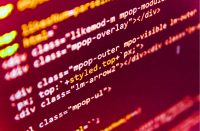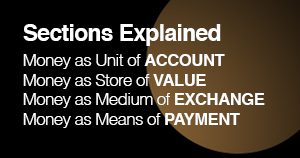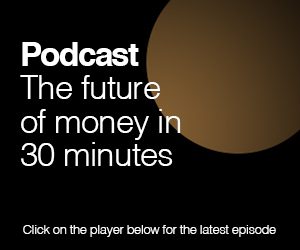As they grapple with the anarchic growth of digital assets, regulators and policymakers around the world have been trying to bring some order to the frenzy.
In the wake of the 2017 bitcoin, blockchain and cryptocurrency bubble, they have been introducing classification frameworks that try to distinguish between different types of digital asset token.
According to researchers at Cambridge University’s Centre for Alternative Finance (CCAF), regulators tend to distinguish three kinds of digital asset: payment (or exchange) tokens, utility tokens and security tokens.
As its name suggests, a payment (exchange) token can be used as a digital means of payment or exchange. A utility token grants access to a digital resource, such as contractual rights. And a security token has an investment purpose.
Capturing the novelty of digital assets
But this demarcation of token categories fails to do justice to the scale of the innovation going on in the digital asset sector, argue the authors of a new CCAF report.
“Existing taxonomies developed by national and international authorities have failed to fully capture the relevant features of digital assets and the true novelty introduced by cryptoassets,” say Jason Allen, Michel Rauchs, Apolline Blandin and Keith Bear.
There’s a legal ‘bridge’ between the token and its underlying asset
This is because policymakers have been focusing too much on the form, rather than the substance of digital assets, say the Cambridge authors. This leads them to underestimate the potential scale of future disruption to the world’s financial and legal systems.
According to Allen, Rauchs, Blandin and Bear, a digital asset embodies the most important features of an underlying asset, whether that’s a financial asset like a share or bond or a physical asset like land, property or a commodity.
Once the digital asset has been created, those features of the underlying asset can be dealt with by dealing with the digital asset token itself. In other words, there’s a legal ‘bridge’ between the token and its underlying asset.
In many people’s eyes, the token then becomes the relevant object. For example, ownership rights, like the title to a house, might be transferred by transferring a digital token, without affecting those living in the house.
Rights and obligations can be encoded directly into the assets
Features of digital assets
Digital assets, say the CCAF authors, have a number of important features.
They are expressive, meaning that rights and obligations can be encoded directly into the assets and then automatically executed.
Digital assets are controlled via cryptographic keys, which are needed to sign transactions.
And the assets are compatible, meaning that they can move freely within their own system boundaries.
However, say the report’s authors, in the eyes of the law, digital assets should usually be treated just as a kind of property.
“For the most part,” they say, “these ‘new’ digital assets relate to existing and well-known legal concepts, effectively representing a set of rights embodied in a new digital form. In our view, they do not constitute a standalone category for the purposes of legal categorisation.”
Common law legal systems have proved more accommodating
In the report, Allen, Rauchs, Blandin and Bear call for greater clarification from national governments on the legal status of digital assets.
“The two most important concepts in the law of property are ownership and possession,” they say.
“Traditional understandings of both these concepts are challenged by digital assets,” they argue.
Common law and civil law countries
The report’s authors go on to say that common law legal systems, which are more flexible when defining what can be the object of property rights, have so far proved more accommodating to digital assets.
For example, in January this year, a London judge stated for the first time that digital assets are tradeable property and programmable contracts involving those assets are enforceable agreements under English law.
The judge made his ruling when freezing bitcoins stolen in a ransomware attack.
Other legal systems, such as the civil law jurisdictions of Germany and Japan, have struggled to recognise non-physical assets as subject to property rights.
In Japan’s case, the difficulty in recognising bitcoin as property led to problems in asserting ownership rights after the Mt. Gox cryptocurrency exchange failure in 2014.
Cryptoassets are a subset of digital assets
Cryptoassets are distinct and hard to pin down
There’s another particularly thorny area for lawyers and regulators, says the CCAF—cryptoassets.
The Cambridge researchers say they view cryptoassets as a subset of digital assets, while pointing out that there’s a lack of global agreement on such definitions.
The CCAF says cryptoassets are purely virtual assets without any obvious link to real property.
These cryptoassets—like bitcoin—are more difficult to accommodate under existing legal frameworks, the researchers say.
According to the CCAF, cryptoassets are digital data units which have no formal issuer and which are issued and transferred via open, permissionless systems. Such systems are often based on distributed ledger technology.
“A cryptoasset is neither a corporeal object nor a right to anything”
And, the Cambridge researchers go on, it’s impossible to view cryptoassets as distinct from their own networks.
This is because cryptoasset tokens play an indispensable role in the economic incentive design of the underlying distributed ledger. So separating the asset from its network would render the whole system unviable.
Bitcoins, for example, are created by network participants called miners, who also receive the fees from bitcoin transactions. The electrical energy expended by miners then helps secure the network.
According to the CCAF report’s authors, this leaves cryptoassets in a legal grey area.
“Unlike other digital assets, a cryptoasset is neither a corporeal object nor a right to anything,” they say.
Sign up here for the monthly New Money Review newsletter
Click here for a full list of episodes of the New Money Review podcast: the future of money in 30 minutes









